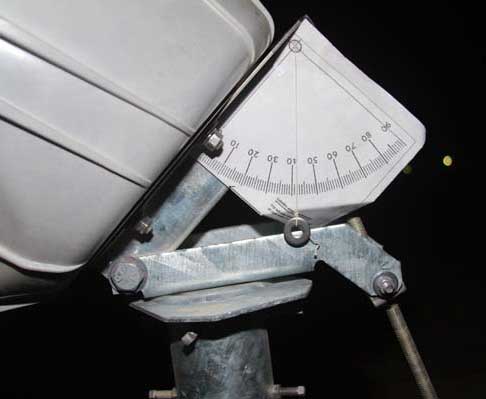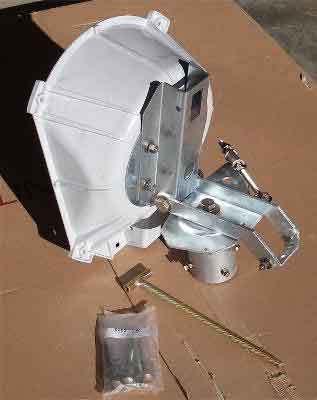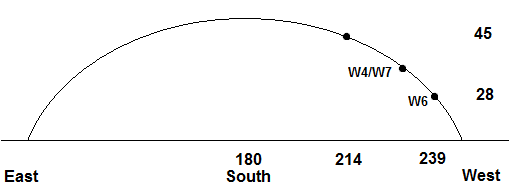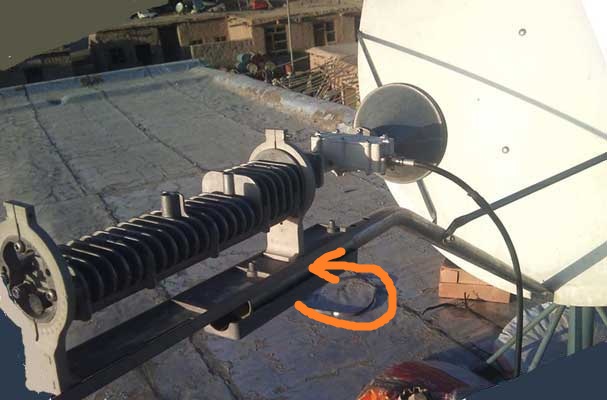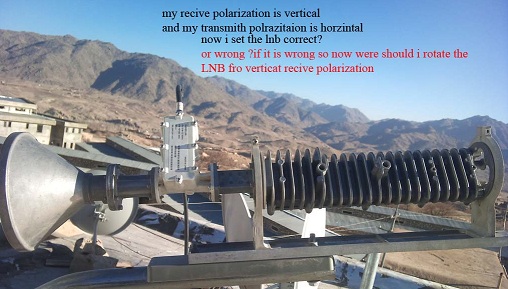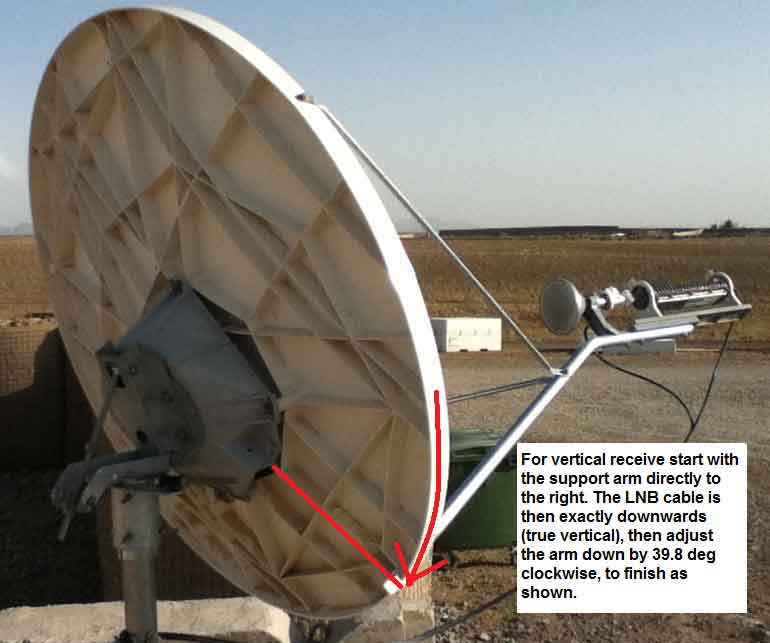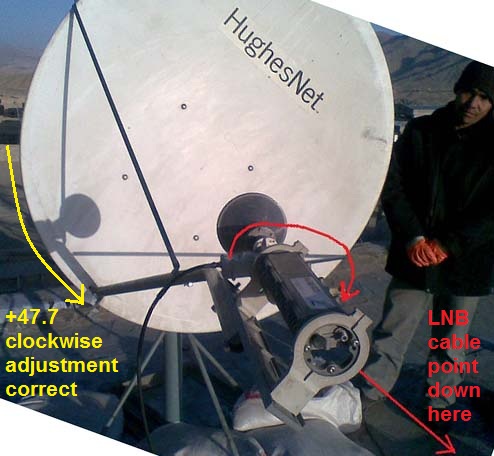| Home Login Register |
| Satellite Internet forum › HughesNet and Hughes HX VSATs › HX50 pointing problem in afghanistan plz help |
|
Pages: 1
|
HX50 pointing problem in afghanistan plz help(Read 31635 times) |
|
afghan-gsm
Member
★★ Offline Posts: 34 |
Dec 24th, 2011 at 2:09pm
|
| Back to top |
« Last Edit: Dec 25th, 2011 at 10:06am by Admin1 »
IP Logged
|
|
Eric Johnston
Senior Member
★★★ Offline Posts: 2109 |
Reply #1 - Dec 24th, 2011 at 2:17pm
|
| Back to top |
« Last Edit: Dec 25th, 2011 at 10:06am by Admin1 »
IP Logged
|
|
afghan-gsm
Member
★★ Offline Posts: 34 |
Reply #2 - Dec 24th, 2011 at 3:17pm
|
| Back to top |
« Last Edit: Sep 13th, 2015 at 3:43pm by Admin1 »
IP Logged
|
|
Eric Johnston
Senior Member
★★★ Offline Posts: 2109 |
Reply #3 - Dec 24th, 2011 at 5:27pm
|
| Back to top |
« Last Edit: Dec 25th, 2011 at 10:06am by Admin1 »
IP Logged
|
|
afghan-gsm
Member
★★ Offline Posts: 34 |
Reply #4 - Dec 25th, 2011 at 5:52am
|
| Back to top |
« Last Edit: Sep 13th, 2015 at 3:43pm by Admin1 »
IP Logged
|
|
Eric Johnston
Senior Member
★★★ Offline Posts: 2109 |
Reply #5 - Dec 25th, 2011 at 9:41am
|
| Back to top |
IP Logged
|
|
afghan-gsm
Member
★★ Offline Posts: 34 |
Reply #6 - Dec 25th, 2011 at 12:53pm
|
| Back to top |
« Last Edit: Sep 13th, 2015 at 3:44pm by Admin1 »
IP Logged
|
|
Eric Johnston
Senior Member
★★★ Offline Posts: 2109 |
Reply #7 - Dec 25th, 2011 at 1:47pm
|
| Back to top |
IP Logged
|
|
afghan-gsm
Member
★★ Offline Posts: 34 |
Reply #8 - Dec 25th, 2011 at 2:16pm
|
| Back to top |
IP Logged
|
|
Eric Johnston
Senior Member
★★★ Offline Posts: 2109 |
Reply #9 - Dec 25th, 2011 at 2:21pm
|
| Back to top |
IP Logged
|
|
afghan-gsm
Member
★★ Offline Posts: 34 |
Reply #10 - Dec 25th, 2011 at 4:13pm
|
| Back to top |
IP Logged
|
|
Admin1
YaBB Admin
★★★★★ Offline Posts: 1215 |
Reply #11 - Dec 25th, 2011 at 5:30pm
|
| Back to top |
« Last Edit: Dec 25th, 2011 at 7:34pm by Admin1 »
IP Logged
|
|
afghan-gsm
Member
★★ Offline Posts: 34 |
Reply #12 - Dec 26th, 2011 at 7:55am
|
| Back to top |
« Last Edit: Sep 13th, 2015 at 3:44pm by Admin1 »
IP Logged
|
|
Admin1
YaBB Admin
★★★★★ Offline Posts: 1215 |
Reply #13 - Dec 26th, 2011 at 9:49am
|
| Back to top |
« Last Edit: Dec 26th, 2011 at 11:00am by Admin1 »
IP Logged
|
|
turana
Member
★★ Offline Posts: 10 |
Reply #14 - Dec 26th, 2011 at 12:43pm
|
| Back to top |
« Last Edit: Sep 13th, 2015 at 3:45pm by Admin1 »
IP Logged
|
|
Admin1
YaBB Admin
★★★★★ Offline Posts: 1215 |
Reply #15 - Dec 26th, 2011 at 12:58pm
|
| Back to top |
IP Logged
|
|
afghan-gsm
Member
★★ Offline Posts: 34 |
Reply #16 - Dec 26th, 2011 at 1:38pm
|
| Back to top |
IP Logged
|
|
afghan-gsm
Member
★★ Offline Posts: 34 |
Reply #17 - Dec 26th, 2011 at 2:01pm
|
| Back to top |
« Last Edit: Sep 13th, 2015 at 3:45pm by Admin1 »
IP Logged
|
|
Admin1
YaBB Admin
★★★★★ Offline Posts: 1215 |
Reply #18 - Dec 26th, 2011 at 2:22pm
|
| Back to top |
IP Logged
|
|
afghan-gsm
Member
★★ Offline Posts: 34 |
Reply #19 - Dec 26th, 2011 at 3:25pm
|
| Back to top |
IP Logged
|
|
afghan-gsm
Member
★★ Offline Posts: 34 |
Reply #20 - Dec 26th, 2011 at 4:14pm
|
| Back to top |
« Last Edit: Sep 13th, 2015 at 3:46pm by Admin1 »
IP Logged
|
|
Eric Johnston
Senior Member
★★★ Offline Posts: 2109 |
Reply #21 - Dec 26th, 2011 at 4:35pm
|
| Back to top |
IP Logged
|
|
afghan-gsm
Member
★★ Offline Posts: 34 |
Reply #22 - Dec 26th, 2011 at 6:03pm
|
| Back to top |
IP Logged
|
|
Eric Johnston
Senior Member
★★★ Offline Posts: 2109 |
Reply #23 - Dec 26th, 2011 at 7:07pm
|
| Back to top |
IP Logged
|
|
afghan-gsm
Member
★★ Offline Posts: 34 |
Reply #24 - Dec 27th, 2011 at 6:42am
|
| Back to top |
« Last Edit: Sep 13th, 2015 at 3:46pm by Admin1 »
IP Logged
|
|
Eric Johnston
Senior Member
★★★ Offline Posts: 2109 |
Reply #25 - Dec 27th, 2011 at 10:11am
|
| Back to top |
IP Logged
|
|
turana
Member
★★ Offline Posts: 10 |
Reply #26 - Dec 27th, 2011 at 11:19am
|
| Back to top |
« Last Edit: Sep 13th, 2015 at 3:46pm by Admin1 »
IP Logged
|
|
Eric Johnston
Senior Member
★★★ Offline Posts: 2109 |
Reply #27 - Dec 27th, 2011 at 12:39pm
|
| Back to top |
IP Logged
|
|
afghan-gsm
Member
★★ Offline Posts: 34 |
Reply #28 - Dec 27th, 2011 at 1:00pm
|
| Back to top |
« Last Edit: Sep 13th, 2015 at 3:47pm by Admin1 »
IP Logged
|
|
turana
Member
★★ Offline Posts: 10 |
Reply #29 - Dec 27th, 2011 at 1:57pm
|
| Back to top |
IP Logged
|
|
Eric Johnston
Senior Member
★★★ Offline Posts: 2109 |
Reply #30 - Dec 27th, 2011 at 2:51pm
|
| Back to top |
IP Logged
|
|
afghan-gsm
Member
★★ Offline Posts: 34 |
Reply #31 - Dec 28th, 2011 at 5:10am
|
| Back to top |
IP Logged
|
|
afghan-gsm
Member
★★ Offline Posts: 34 |
Reply #32 - Dec 28th, 2011 at 9:37am
|
| Back to top |
IP Logged
|
|
Eric Johnston
Senior Member
★★★ Offline Posts: 2109 |
Reply #33 - Dec 28th, 2011 at 9:40am
|
| Back to top |
IP Logged
|
|
afghan-gsm
Member
★★ Offline Posts: 34 |
Reply #34 - Dec 28th, 2011 at 1:28pm
|
| Back to top |
IP Logged
|
|
Eric Johnston
Senior Member
★★★ Offline Posts: 2109 |
Reply #35 - Dec 28th, 2011 at 4:05pm
|
| Back to top |
IP Logged
|
|
afghan-gsm
Member
★★ Offline Posts: 34 |
Reply #36 - Dec 28th, 2011 at 4:17pm
|
| Back to top |
IP Logged
|
|
Eric Johnston
Senior Member
★★★ Offline Posts: 2109 |
Reply #37 - Dec 28th, 2011 at 6:20pm
|
| Back to top |
« Last Edit: Dec 28th, 2011 at 9:04pm by Admin1 »
IP Logged
|
|
afghan-gsm
Member
★★ Offline Posts: 34 |
Reply #38 - Dec 29th, 2011 at 1:52am
|
| Back to top |
IP Logged
|
|
Eric Johnston
Senior Member
★★★ Offline Posts: 2109 |
Reply #39 - Dec 29th, 2011 at 9:39am
|
| Back to top |
IP Logged
|
|
afghan-gsm
Member
★★ Offline Posts: 34 |
Reply #40 - Dec 29th, 2011 at 12:49pm
|
| Back to top |
« Last Edit: Sep 13th, 2015 at 3:47pm by Admin1 »
IP Logged
|
|
Eric Johnston
Senior Member
★★★ Offline Posts: 2109 |
Reply #41 - Dec 29th, 2011 at 1:47pm
|
| Back to top |
IP Logged
|
|
afghan-gsm
Member
★★ Offline Posts: 34 |
Reply #42 - Dec 29th, 2011 at 2:09pm
|
| Back to top |
« Last Edit: Sep 13th, 2015 at 3:48pm by Admin1 »
IP Logged
|
|
Eric Johnston
Senior Member
★★★ Offline Posts: 2109 |
Reply #43 - Dec 29th, 2011 at 3:43pm
|
| Back to top |
« Last Edit: Dec 29th, 2011 at 6:42pm by Admin1 »
IP Logged
|
|
afghan-gsm
Member
★★ Offline Posts: 34 |
Reply #44 - Dec 29th, 2011 at 5:03pm
|
| Back to top |
« Last Edit: Dec 29th, 2011 at 6:43pm by Admin1 »
IP Logged
|
|
Admin1
YaBB Admin
★★★★★ Offline Posts: 1215 |
Reply #45 - Dec 29th, 2011 at 6:41pm
|
| Back to top |
IP Logged
|
|
turana
Member
★★ Offline Posts: 10 |
Reply #46 - Dec 29th, 2011 at 8:37pm
|
| Back to top |
IP Logged
|
|
afghan-gsm
Member
★★ Offline Posts: 34 |
Reply #47 - Dec 30th, 2011 at 2:21am
|
| Back to top |
IP Logged
|
|
afghan-gsm
Member
★★ Offline Posts: 34 |
Reply #48 - Dec 30th, 2011 at 2:36am
|
| Back to top |
IP Logged
|
|
Eric Johnston
Senior Member
★★★ Offline Posts: 2109 |
Reply #49 - Dec 30th, 2011 at 1:16pm
|
| Back to top |
IP Logged
|
|
afghan-gsm
Member
★★ Offline Posts: 34 |
Reply #50 - Jan 2nd, 2012 at 11:11am
|
| Back to top |
« Last Edit: Jan 2nd, 2012 at 12:50pm by Admin1 »
IP Logged
|
|
Pages: 1
|
Email me: eric@satsig.net
Powered by YaBB 2.5.2!
YaBB Forum Software © 2000-. All Rights Reserved.
Disclaimer, Terms of Use and Privacy Forum User Agreement Forum rules Cookie policy.




